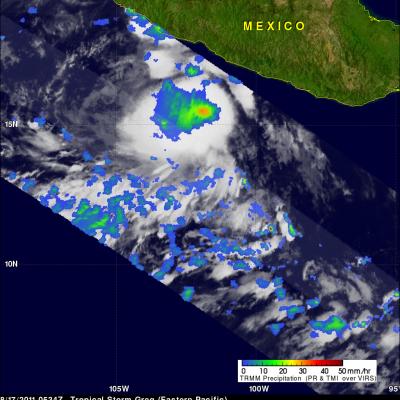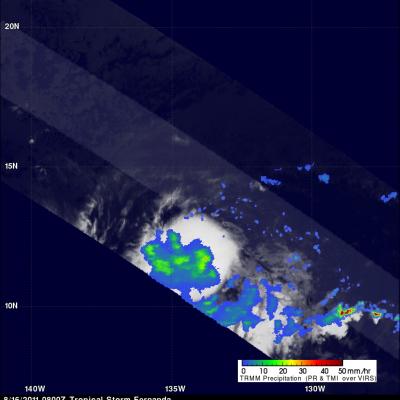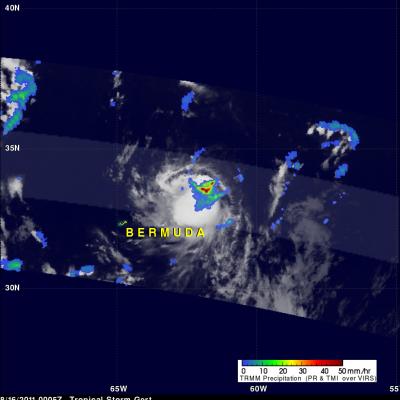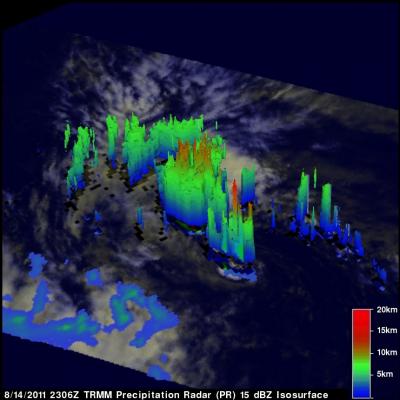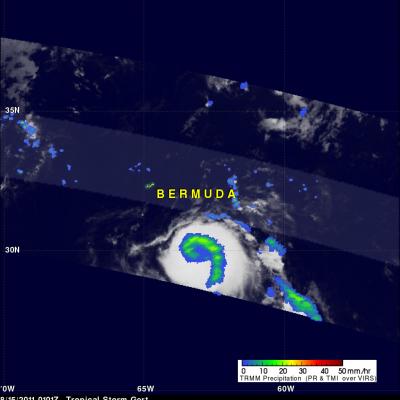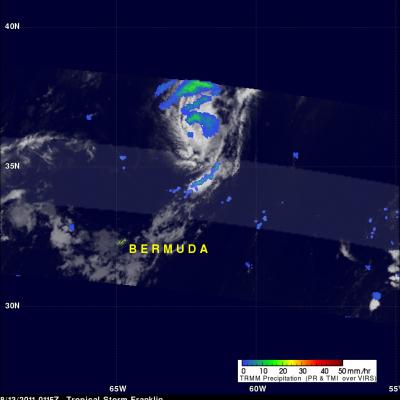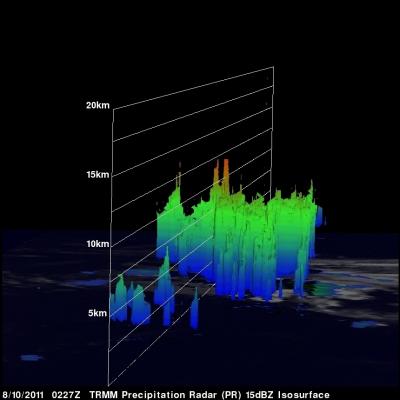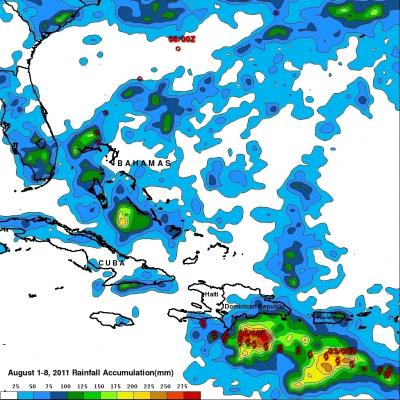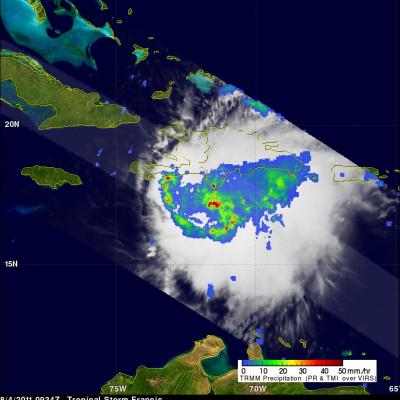Tropical Storm Greg Forms
A tropical depression (7E) off the southern coast of Mexico was upgraded by the National Hurricane Center (NHC) to tropical storm Greg shortly after the TRMM satellite saw it on 17 August 2011 at 0534 UTC. TRMM's Microwave Imager (TMI) showed that intense convective thunderstorms within the developing storm were dropping rainfall at rates greater than 30mm/hr (1.2 inches) in an area near the center of the storm. Greg is expected to enhance rainfall over the southwest coastline of mexico for the next day or so. Greg is forecast by the NHC to intensify to hurricane strength within 24 hours while


